Vehicles that are designed for off-road use frequently quote measurements and parameters to let consumers know what their capabilities are off-road. After all, there’s no point in purchasing a vehicle to drive through the wilderness if it’s going to get stuck in the first five minutes.
Some of these are related to power and torque, some related to the depth of water you can drive through (‘wading depth’) and some are related to the dimensions of the vehicle such as the width, height, weight, ground clearance, length and wheelbase.
Those final three measurements directly affect approach, departure and ramp breakover angles.
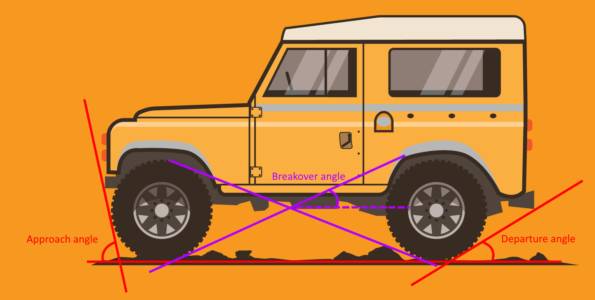
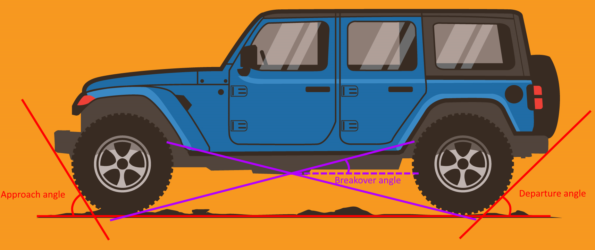
The wheelbase in relation to length gives an indication of how close the wheels are to the corners of the vehicle, and the ground clearance lets us know how much space there is from the ground to the underside of the vehicle. In simplistic terms, the closer the wheels are to the front and the higher the bodywork is off the ground, the more acute the change in angle of the ground that your vehicle will cope with. This is called the approach angle and it’s relevant as you approach a slope and as you drive off a slope onto flat ground.
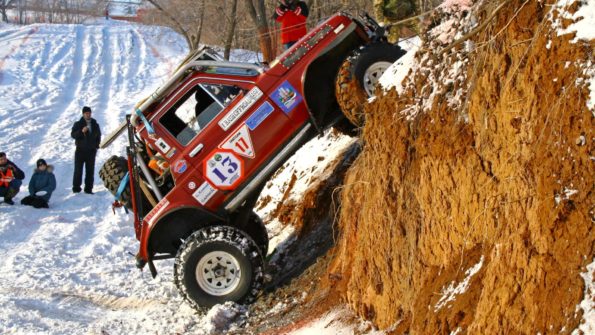
The same applies to the departure angle: the closer the rear wheels are to the corner of the vehicle and the higher the bodywork is off the ground, the steeper the slope you can drive onto and off. A long rear overhang, large bumper or towbar will reduce the departure angle, as you can see in the diagrams above.
If the front wheels and rear wheels extend forwards and behind the body, the approach and departure angles can be very steep as there’s no bodywork to rub on the ground.
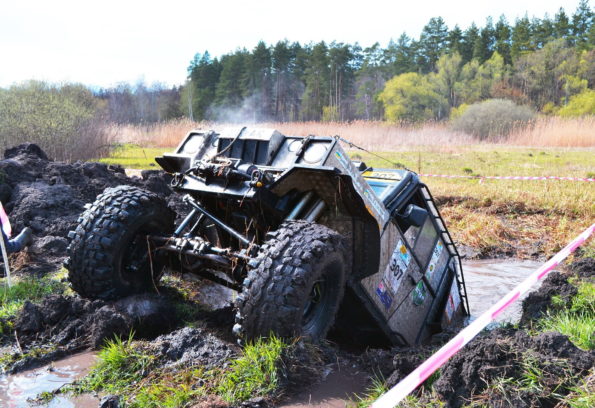
However, the ramp breakover angle is still a limitation. This determines how much convex change in slope that the vehicle can drive over.
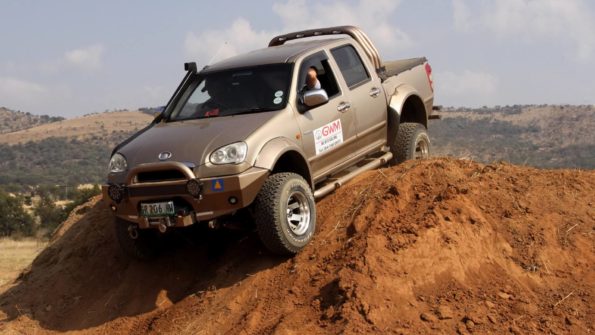
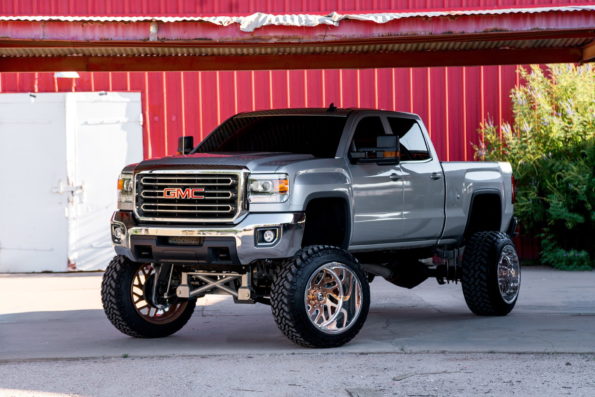
As well as the departure angle, there will be the maximum slope that the vehicle can drive on without tipping over. This is determined by its centre of gravity. If you have a roof rack, this makes the centre of gravity higher and therefore reduces the maximum slope angle.
